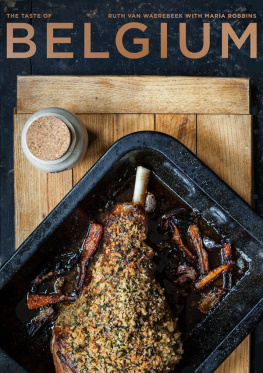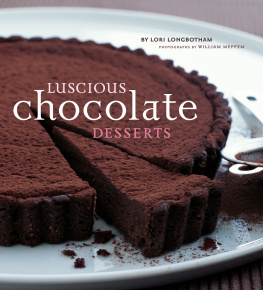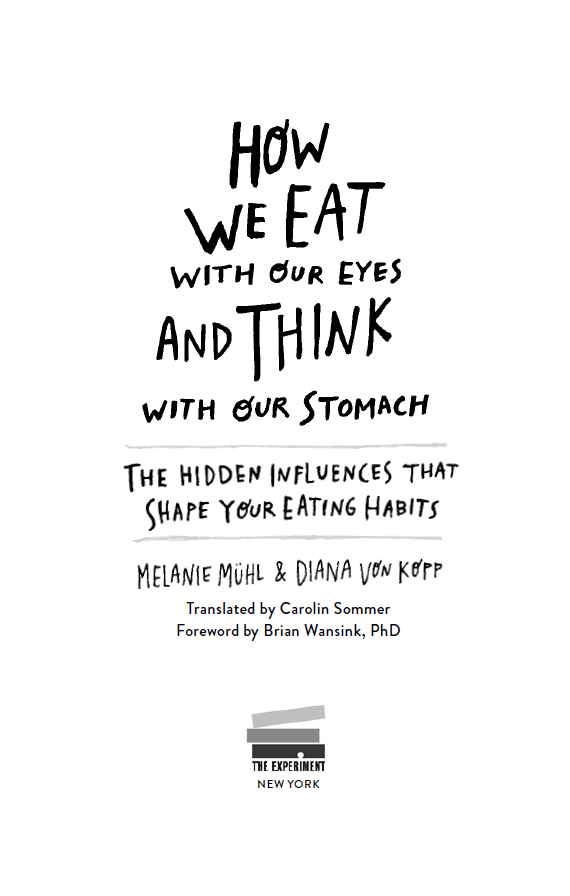How We Eat with Our Eyes and Think with Our Stomach: The Hidden Influences That Shape Your Eating Habits
Copyright 2016 by Carl Hanser Verlag Mnchen
Translation copyright 2017 by Carolin Sommer
Foreword copyright 2017 by Brian Wansink
Originally published in Germany as Die Kunst des klugen Essens by Carl Hanser Verlag in 2016. First published in North America by The Experiment, LLC, in 2017.
All rights reserved. Except for brief passages quoted in newspaper, magazine, radio, television, or online reviews, no portion of this book may be reproduced, distributed, or transmitted in any form or by any means, electronic or mechanical, including photocopying, recording, or information storage or retrieval system, without the prior written permission of the publisher.
The Experiment, LLC, 220 East 23rd Street, Suite 301, New York, NY 10010-4674 | theexperimentpublishing.com
This book contains the opinions and ideas of its authors. The authors and publisher are not engaged in rendering medical, health, or any other kind of personal professional services in the book. The authors and publisher specifically disclaim all responsibility for any liability, loss, or riskpersonal or otherwisethat is incurred, directly or indirectly, by the use and application of any of the contents of this book.
Where the publisher was aware of a trademark claim, the designations have been capitalized.
The Experiments books are available at special discounts when purchased in bulk for premiums and sales promotions as well as for fund-raising or educational use. For details, contact us at .
Library of Congress Cataloging-in-Publication Data available upon request
Ebook ISBN 978-1-61519-424-7
Cover design by Sarah Smith | Text design by Sarah Schneider
Manufactured in the United States of America
Distributed by Workman Publishing Company, Inc.
Distributed simultaneously in Canada by Thomas Allen & Son Ltd.
First printing November 2017
10 9 8 7 6 5 4 3 2 1
CONTENTS
Foreword
Although we eat a thousand meals every year, were still not really sure why we ordered what we did for lunch. We might think we are master and commander of everything we eat, but the size of a plate, your friend next to you, and the fonts on the menu can trick you more than you could ever realize. But theres good news: While these circumstances can lead us to eat too much, they can also help us eat lessprovided we make them work in our favor. Melanie Mhl and Diana von Kopp show you how.
How We Eat with Our Eyes and Think with Our Stomach is the perfect page-turner for pointing out all of the hidden persuaders that cause us to eat too much of the wrong foods and to not enjoy food as much as we should. Its like an anti-diet mystery novel. With no lecturing or finger wagging, Mhl and von Kopp perfectly balance great science-based findings with easy news-you-can-use tonight.
This book takes forty-two puzzling questions about why we eat the way we do and demystifies them by using clever examples and insightful science-based studies: Should you go to bed hungry? Why did your last diet fail? What soundtrack should you play during dinner tonight? Should you fight a chocolate craving or allow yourself a taste? These are more than just interesting conversation topics. The answers to these questions can change what we eat by changing what we know. Youll also learn about your food radius, the trophy kitchen syndrome, the doggie bag paradox, and what your love of spicy food says about your personality.
In the food world, some books are often old wine in a new bottle. This book is a serious departure. It allows you to pick and choose the topics you find most interesting and relevant to yourself in the same way you would if you were in a dinner conversation. You can use this for pure enjoyment, just like the dinner conversation, or to really tune in to your senses and even to become a better person. Youll leave the table knowing lots of tricks that will make you smarter and healthier the next time you sit down to eat.
This is the future of healthier eating. It shows how we can make simple changes in our environment to change what we eat. We dont need to use willpower or 24/7 mindfulness. We just need to know more about what Mhl and von Kopp already doand put it into action.
Of all of the books Ive read on food, psychology, and eating behavior this year, How We Eat with Our Eyes and Think with Our Stomach is far and away the most interesting, useful, and entertaining.
Brian Wansink, PhD
Author of Mindless Eating and Slim by Design
Director of Cornell Universitys Food and Brand Lab
Introduction
First the good news: We live in a veritable food paradise that allows us to satisfy our cravings around the clock. The Garden of Eden, by comparison, was a joke. At the same timeand this is where the not-so-good news comes infood is becoming increasingly complicated. Somewhere between vegetarianism, the paleo diet, the raw-food diet, the blood-type diet, and juice cleanses, weve lost track of how, when, and what were supposed to eat and how to have a carefree relationship with fooddespite the fact that eating is one of the most sensual experiences of all!
In order to re-create that carefree relationship, and to understand why we act (and eat!) the way we do, we must peek behind the curtainthat is, behind our own decisions. The number of food choices we make each day is surprising: over two hundred. It goes without saying that not each and every one of those choices is a conscious one, and we obviously dont always analyze in the moment why we ordered dessert or why we sometimes prefer pepperoni pizza; quite the opposite. This is where our subconscious comes in, doing the job for us. On the one hand, its useful as it frees up brain capacity for other things, but on the other hand, its dangerous to hand over the reins to a part of our brain that were not aware ofand thats exactly what we do with the highly sensitive matter of food. But how are we to find our way through this food jungle, eat more healthily and wisely, and really enjoy our food when we cant even say exactly why some foods make us happy while others make our stomachs turn? Or why we sometimes eat so much that we fear we might burst? How do we know when weve had enough? And by the way, how does taste work, and what are the roles of our psyche and our brain in our daily food choices?
Forget for a minute the many diet myths that were constantly being fed, which only make us insecure. Instead, lets focus on the verified findings from behavioral psychology and neuroscience that decode our sense of taste and shine a light on the social aspect of food. In recent years, rapid progress has been made in research into these areas, unearthing some astonishing factsa stroke of luck not just for our health, but also for our gustatory pleasure.
And how to understand our food preferences? These foundations are already laid in the womb. Did you know: the sweeter the amniotic fluid, the more often the unborn baby swallows? Bitter compounds, however, are not so popular. Once were born, the conditioning continues. Some of us turn into picky eaters, while others happily eat everything thats put in front of us. Sooner or later we find ourselves on our first diet and realize: Darn, its not working! But why not? Because, in short, we are not rational eaters.
Pointing out the irrational way we often make choices, the behavioral psychologist Dan Ariely describes us humans as pawns in a game whose forces we largely fail to comprehend. And when we do, we systematically underestimate them. This is also true with food. The aim of this book is to expose these forces and, using this information, to help improve our daily lives. Lets take back the reins and start eating with more awareness and more enjoyment!









